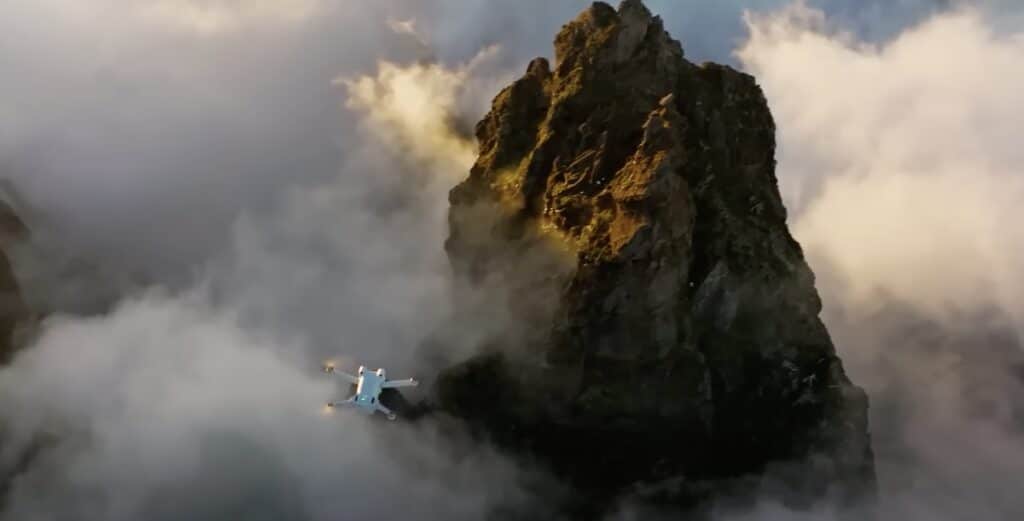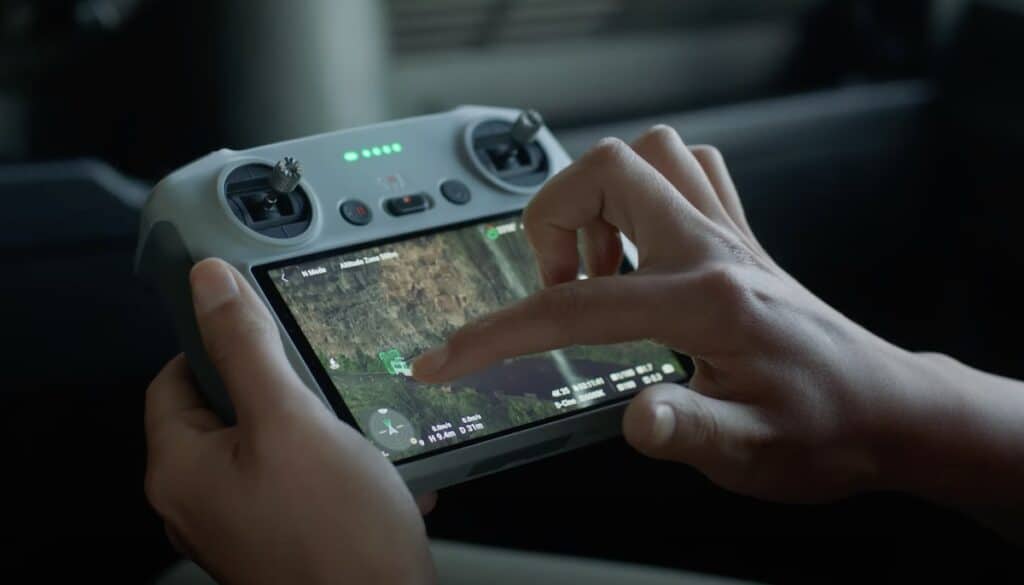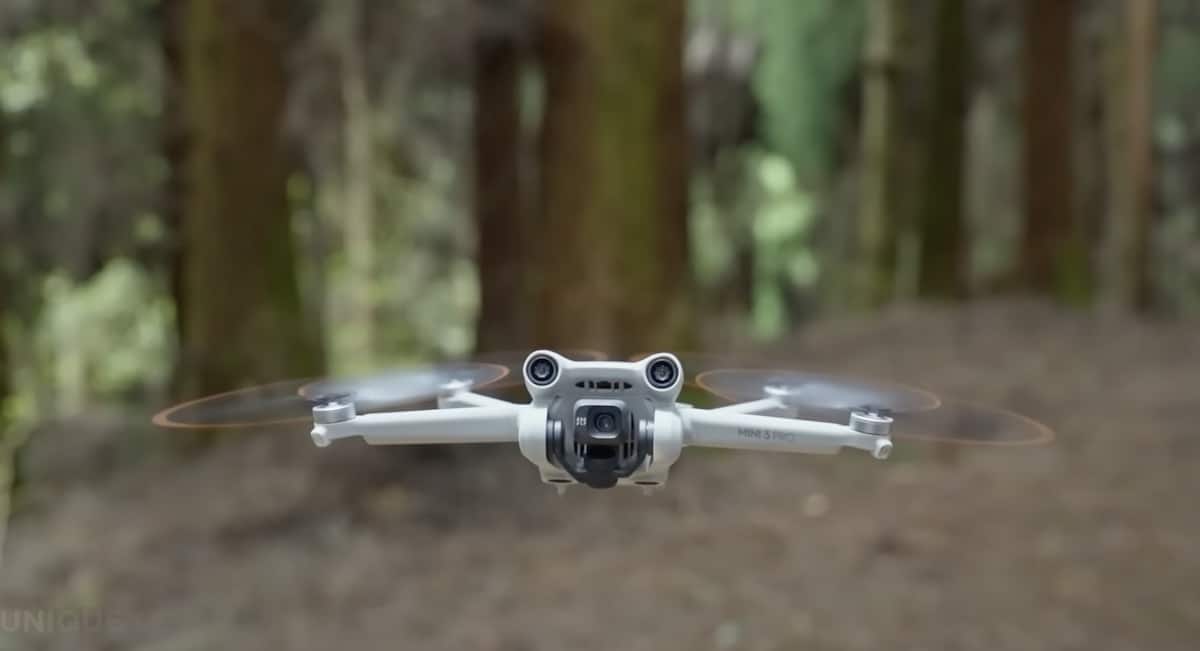Professional quality doesn’t come in a smaller package. The DJI Mini 3 Pro is truly the professional of the Mini lineup and the best all-around drone there is right now.
Introduction
DJI released the Mini 3 Pro to meet the needs of the creators: professional-quality video and legal operations. Weight is the biggest concern of most regulatory bodies when it comes to unmanned aviation. Coming in at 249 grams, the Mini 3 Pro hits the sweet spot that removes the requirement to register the drone with the FAA and many other countries’ airspace regulators.
Combine that with a 4K 60 fps camera on a redesigned gimbal to allow for full resolution images in landscape and portrait modes- DJI has got a game-changing drone on its hands. With supply issues in every industry right now, shipping has been delayed and some models are pre-order only at the moment. With the optional DJI RC controller, you can order the DJI Mini 3 Pro today in the United States (and soon in Canada too)! The DJI Mini 3 Pro is truly the best all-around drone on the market right now.

In the Box
DJI always includes everything needed to get up and fly easily in the box, but for the first time there is a no RC controller option available for those with compatible controllers already. To get the most out of your DJI drone, opt for one of the Fly More packages though, more on those after the main options. The DJI Mini 3 Pro comes with three purchase options, outlined below, at prices starting at $669 and going up to $909.
DJI Mini 3 Pro (No RC) includes:
- The DJI Mini 3 Pro
- One Intelligent Flight Battery
- One spare propeller set
- One gimbal protector
- One type-C to type-C PD cable
- One screwdriver
- Six screws
DJI Mini 3 Pro includes:
- The DJI Mini 3 Pro
- One DJI RC-N1 Remote Controller
- RC-N1 RC cable to USB-C
- RC-N1 RC cable to Lightning
- RC-N1 RC cable to Micro USB
- One DJI Intelligent Flight Battery
- One spare propeller set
- One gimbal protector
- One type-C to type-C PD cable
- One screwdriver
- Six screws
You can buy DJI Mini 3 Pro here:
DJI Mini 3 Pro (DJI RC) includes:
- The DJI Mini 3 Pro
- One DJI RC Remote Controller
- One DJI Intelligent Flight Battery
- One spare propeller set
- One gimbal protector
- One type-C to type-C PD cable
- One screwdriver
- Six screws
Other options for the DJI Mini 3 Pro include two Fly More packages including extra accessories to make the drone more functional for most consumers. These typically contain extra batteries for more flying and less waiting for charged batteries. Available options are seen here below.
DJI Mini 3 Pro Fly More Kit includes:
- Two Intelligent Flight Batteries
- One Two-way Charging Hub
- Two additional sets of spare propellers
- Twelve spare screws
- One shoulder bag
- One USB-C Data cable
You can buy DJI Mini 3 Pro Fly More Kit on Walmart here:
DJI Mini 3 Pro Fly More Kit Plus includes:
- Two Intelligent Flight Plus Batteries
- One Two-way Charging Hub
- Two additional sets of spare propellers
- Twelve spare screws
- One shoulder bag
- One USB-C Data cable
Video and Gimbal
As is standard for DJI at this point, the camera quality is on par with the best there is on consumer drones. The 4K video is crisp and colorful, with frame rates from 24/25 fps to 50/60 fps. As well as 2.7K and FHD modes with similar frame rates. The FHD mode can shoot slow motion at 120 fps. Nothing groundbreaking there, but the standard for most creators in 2022. Built-in is two-color profiles, Normal and D-Cinelike, for a pleasing color space out of the box. A bonus is the small camera is the zoom ranges- 2x in 4K mode, 3x in 2.7K mode, and 4x in FHD mode.
Speaking of the camera, the Mini 3 Pro has an entirely new camera and gimbal combination that stands out as a big improvement over previous Mini’s. Rocking a 1/1.3-inch CMOS sensor covered by a 24 mm equivalent lens the Mini 3 Pro has an effective 48 MP still resolution. The redesigned gimbal allows for the entire camera to rotate 90 degrees and still be stabilized. Providing wide (or landscape) framed images and vertical (or portrait) framed shots.
With ever-evolving social media platforms (ie TikTok, Instagram, or Twitter) becoming the forefront of digital photography and videography, having the ability to shoot natively in portrait is a beneficial perk for anyone. The uses are basically endless. Let’s get some hard numbers here: tilt -135° to 80°, roll -135° to 45°, pan -30° to 30°, and a max control speed of 100° per second. You can directly control the tilt as usual, from -90° to 60°, while the roll can now be snapped between 0° or 90°.
Other key stats include the shutter rate that goes down to 1/8000 s and as slow as 2 seconds for some long exposures. The f/1.7 aperture provides nice photos and crisp videos. DJI boasts better low light resolution with the new larger aperture. Videos use the standard H.264/H.265 codecs and MP4/MOV file types with HDR footage directly sharable, while the stills are recorded as JPEG or RAW files.
Sharing Features
While sometimes they come across as gimmick-y, sharing features are great for those who like to travel light with the capability to share adventures with friends and family. The built-in “MasterShots” easily recreate professional maneuvers to create stunning shots easily. While the ActiveTrack 4.0 technology that DJI works so hard to perfect can actively track any subject you want.
Actually, DJI gave the Mini 3 Pro the full “FocusTrack” suite (that’s what DJI is calling ActiveTrack 4.0, Spotlight 2.0, and Point of Interest 3.0 now) for feature-rich software capabilities. Combine that with high-speed WiFi downloads directly to any device and you have the perfect post without ever needing to touch a computer. The WiFi download speeds are up to 25 Mbps, great to add an aerial shot to your post or TikTok.
The whole FocusTrack suite is a group of DJI most impressive software. When talking about drones, it’s easy to focus on the hardware, it’s tangible and easy to compare head-to-head. But DJI has spent lots of time and effort on these different software features to make them some of the most robust tracking and focusing drone algorithms out there.
DJI’s ActiveTrack puts most other tracking software to shame, with few exceptions. By making the software capable with a variety of their hardware, it allows for easy feature integration onto DJI’s products. A great addition to the solid hardware that the DJI Mini 3 Pro is using.
Sensing System
Like it’s bigger sibling, the Mavic Pro, the Mini 3 Pro mainstays a full obstacle avoidance system. To protect the Mini and make it a joy to fly, DJI has equipped the Mini 3 pro with a forward, backward, and downward avoidance system. These sensors are quite effective at what they do, DJI has extensive experience in setting up avoidance systems on their drone offerings; the Mini 3 Pro is no different.
DJI’s Advanced Pilot Assistance Systems (APAS 4.0) uses a robust algorithm to calculate trajectories and identify potential objects to avoid before they area hazard. This system makes the Mini 3 Pro the safest Mini yet. The only blind spot on this drone is above; a good trade considering the weight restrictions the Mini 3 Pro was built around.

Aircraft and Battery Specs
The biggest specification to know about the Mini 3 Pro is the weight, 249 grams. I’m saying this again because it’s the reason this drone was made. In the United States, the FAA has decided that drones under 250 grams do not need to be registered as the low mass means minimal risk.
Likewise, many other federal agencies in other countries have also agreed that the 250-gram limit is sufficiently safe to warrant more freedom to the pilot in command. Plus, it makes the Mini 3 Pro more portable. So wins all around. Folded up, the drone is 145 x 90 x 62 mm. Pocket sized if you’re still wearing your Jeanco jeans from 1998, but still small enough for the rest of us. Ready to fly, the drone is 251 x 362 x 70 mm in size. Big enough to keep it in line of sight without too much trouble.
As with all DJI offerings, the drone has multiple flying modes. In sport mode, the Mini 3 Pro can ascend and descend at 5 m/s and move at 16 m/s in a windless environment. C-mode slows everything down for finer control and a more cinematic experience. C-mode specs in at 2 m/s ascent, 1.5 m/s descent, and 6 m/s in movement speed. In the middle is N-mode coming in with 3 m/s ascent/descent and 10 m/s directionally.
It seems that every release by DJI comes with new battery technology making the batteries smaller and the flight times longer. The new Intelligent Flight Battery provides 34 minutes of flight time in ideal conditions and the option for a larger sized battery provides 47 minutes of flight time. Stationary hovering times are slightly less with 30 or 40 minutes depending on your battery.
These battery times allow for extremely far flight distances too, up to 25 km on the larger battery and 18 kms on the standard one. GNSS tracking for those long-distance flights is provided by GPS, Galileo, and BeiDou satellites. The Intelligent Flight Battery Plus can be bought separately or in the Fly More Plus package, but they’re not available in all regions of the world for some reason.
Controllers
The Mini 3 Pro comes with the option of the standard RC-N1 controller or the much nicer DJI RC controller. If you already own the DJI RC, you can even purchase the Mini 3 Pro sans controller. A nice option for those deep into the DJI ecosystem. From distances of up to 12 km, video transmissions will come in at a clear 1080p 30 fps feed.
Which will look great on the super-bright DJI RC controller built-in screen. Even with the larger DJI RC controller and the Fly More bundle, the whole kit weighs in at less than a kilogram. The Mini 3 Pro uses the top end video transmission system, the DJI O3, that’s available on all of DJI’s flagship products.
Pricing
As expected from the insane feature and upgrades lists, the price has increased drastically as well. Where the previous Mini’s were coming in around $299 to $449, the new Mini 3 Pro will be at the pro price of $669 to $909. The Mini 3 Pro is more comparable to the Mavic Pro line of drones than its namesake of the Mini line. A bit disappointing if you were looking to upgrade from an older Mini- but an amazing upgrade from an older Mavic Pro.
The DJI Mini 3 Pro (No RC) will cost you $669, the standard kit (DJI Mini 3 Pro) will be $759, and the DJI Mini 3 Pro (DJI RC) will be $909. If you aren’t sure on the DJI RC, hopefully it will be sold separately later – but right now it is only an option in the kit. The Fly More package is an additional $189 and the Fly More Plus is an additional $249 when purchased with the Mini 3 Pro.
Overview
Generally, the smaller the drone, the less professional features it had. The reason the Mini 3 Pro is a game changer is because it offers those professional features in the smallest package possible. Unlike the Mavic pro, it fits into regulatory weight restrictions, and unlike the Gen-2 Mini, it has full obstacle avoidance and APAS 4.0. Flying the Mini 3 Pro will feel more like a premium, top-end product than the previous Mini’s. All while being just as portable as the Mini line was designed for.
By adding all these Mavic Pro features into the smaller package, the real question is why would you buy the Mavic Pro? Flight times on the Mini 3 Pro are fantastic, the camera is crisp and bright, the gimbal is cutting edge, and with the DJI RC controller it’s the full package for a content creator of any level.
In my opinion, the only way to get a higher quality drone for videography is to move up to the professional Matrice line – which is a whole other level of drone. Few competitors can compete with the Mini 3 Pro on features and certainly not with the size and weight combo. This makes the DJI Mini 3 Pro the best on the market right now and by a good amount.
Does this mean we will start to see more feature-rich, micro-sized drones in the future from DJI and competitors? I hope so. The ability to increase portability without sacrificing quality is the best of all worlds. Or perhaps the Mavic Pro line will be including some crazy new technology that we’ve yet to see. Either way, it’s a great time to be watching these drones evolve.

